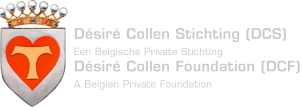Memorabilia I
Contract Désiré Collen with LRD vzw, Februari 11, 1976
On January 18, 1973 KU Leuven founded Leuven Research and Development (LRD) vzw, a non-profit organization, as a technology transfer office for the valorization of research results of its scientists.
On February 11, 1976 Désiré Collen entered into an agreement with LRD, transferring all legal and commercial rights, as well as the execution thereof, of his research results obtained at KU Leuven. Royalty income thereof, generated by LRD, would be allocated as agreed in the contract.
This agreement would have a major impact on the career of Désiré Collen.
In 1984 LRD was incorporated into the legal structure of KU Leuven as KULRD, which presently functions as a semi-autonomous business unit of KU Leuven.
Inauguration 9th floor GHB, 1992
The ninth floor of the research building on Campus Gasthuisberg (the University Hospitals), was built with financial support of the DCRF. During the construction of the Central Service building, financed by the department of National Health, the opportunity arose to add an additional floor on the top of the building, on condition that BEF75 million was donated to the KU Leuven for the fortification of the foundations and the basic construction works for the 3600 m2 of the top floor. In exchange, 1/3 of the surface was to be made available to the DCRF (the total interior construction would cost BEF225 million); and 1/3 to Professor Collen’s university research laboratory (Center for Molecular and Vascular Biology) in exchange for the space it previously occupied. The remaining 1/3 was initially not assigned, but afterwards DCRF acquired half of this surface as laboratory space in exchange for a donation of BEF38 million. The other half was used to build a state of the art ‘Specific Pathogen Free Animalium Marc Verstraete’ at a cost of about BEF200 million.
Center for Molecular and Vascular Biology, KU Leuven Team, 1997
The team of the Center for Molecular and Vascular Biology (CMVB) at the Faculty of Medicine of KU Leuven in 1997 consisted of 74 fulltime members (9 academic staff, 17 scientific staff, 14 PhD students, 24 research technicians, 17 hospital laboratory technicians and 3 administrative staff).
Center for Transgene Technology and Gene Therapy -VIB Team, 1997
The team of the Center for Transgene Technology and Gene Therapy (CTG) of the Flanders Institute for Biotechnology (VIB) at KU Leuven in 1997 consisted of 80 fulltime members (3 senior scientific staff, 16 scientific staff, 15 PhD students, 35 research technicians, 7 staff in the specific pathogen free animal facility and 4 administrative staff).
ThromboGenics NV, 2006 – 2013
The
constitution of ThromboGenics NV on May 30, 2006 and its listing on Euronext
Brussels on July 6, 2006 formed the pinnacle of translational medical research
of Désiré Collen and his collaborators at CMVB-KUL and CTG-VIB since 1990. Its
mission was to develop biopharmaceutical drugs to treat cardiovascular
diseases, visual disorders and cancer. The company showed steady growth over
the first 6 years of its existence.
With the conclusion of a major licensing deal with Alcon in May 2012 and the approval by the FDA of its proprietary medicine ocriplasmin (Jetrea(R)) for vitreomacular traction in October 2012, the company was reoriented exclusively towards ophthalmic medicines.
In order to give adequate recognition to the actual contributors, a brief history of the development of Jetrea(R) was included on the website of Thrombogenics NV in 2013.
Disagreeing with the change in strategic focus of the company, Désiré Collen resigned as Chairman of the Board of ThromboGenics NV on November 1, 2013 and left the company which had taken him more than 20 years to build.
Unfortunately, the expectations of the refocused ThromboGenics NV were not met and its share price decreased over time to a market cap below the IPO value in 2006. Sadly, ThromboGenics NV has burned over €450 million investors’ money.
In 2019 the
company name was changed to Oxurion NV, to more adequately reflect its present
focus.
